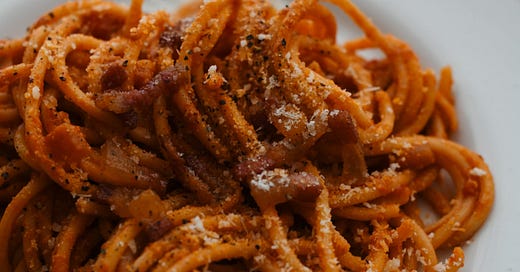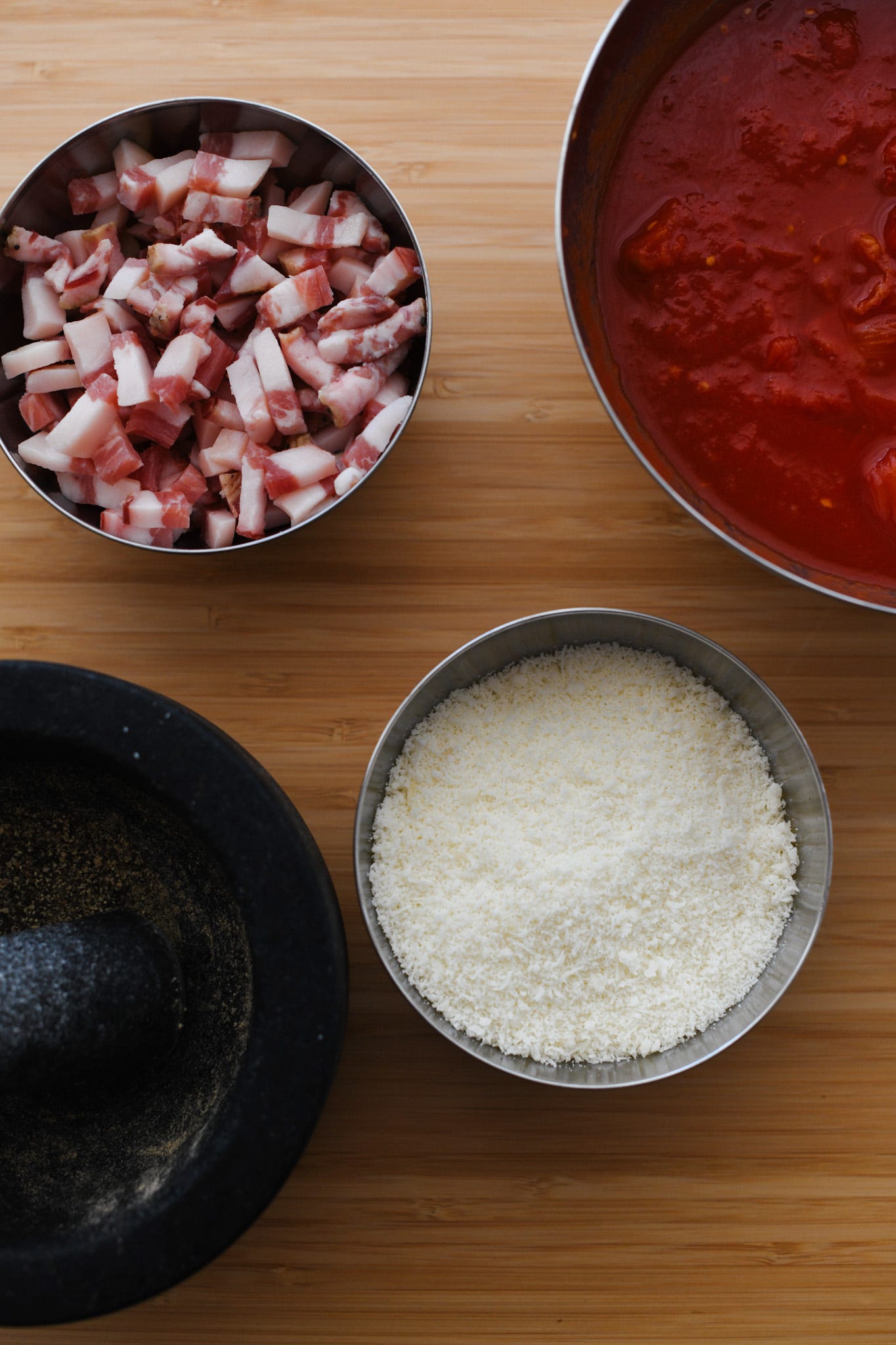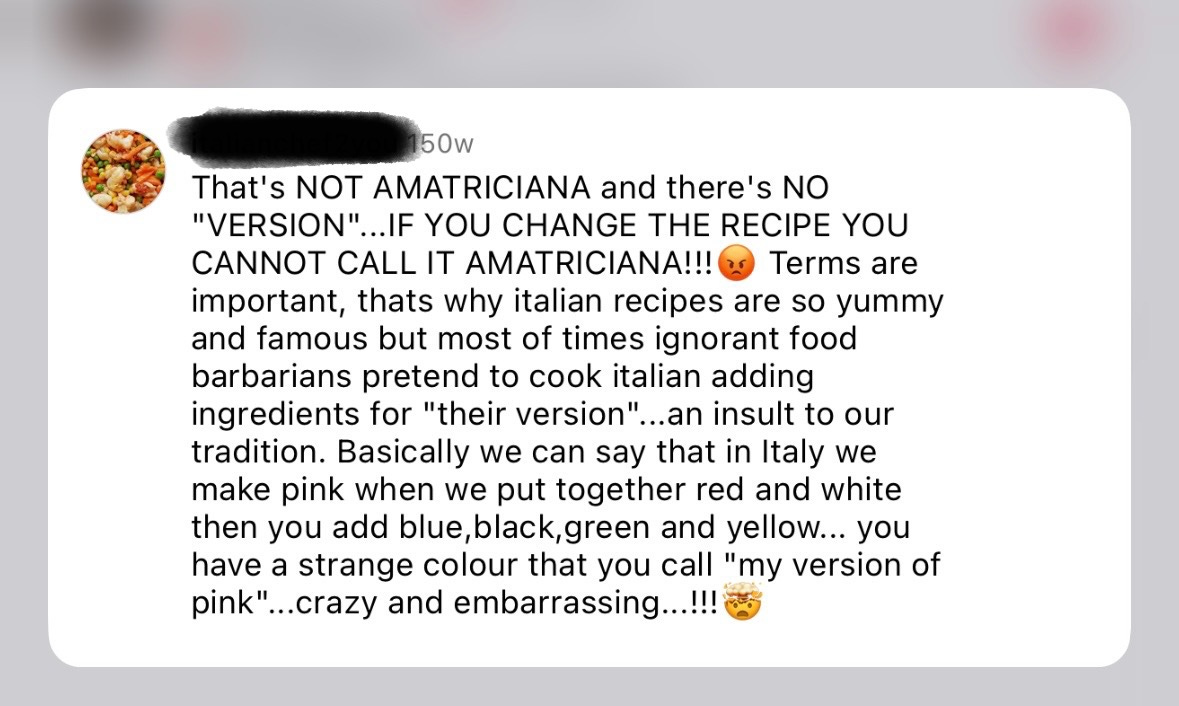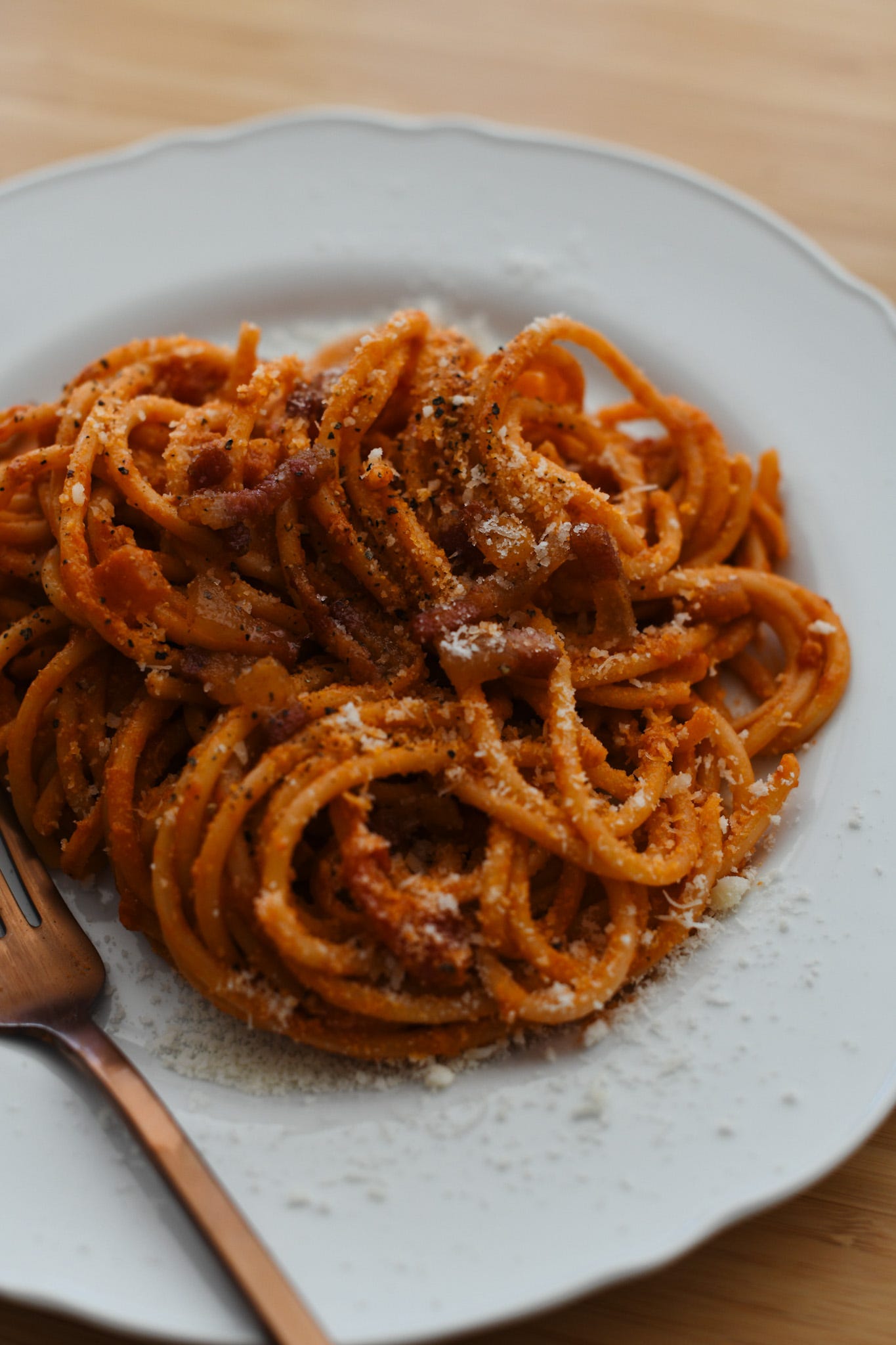While I consider myself a professional carbonara maker, it’s another Roman pasta that frequents the table at home, possibly more than any other sauce. It’s also one that I almost always order if I spy it on a menu: pasta all’Amatriciana.
L’Amatriciana, or simply Amatriciana sauce is one of the four famous Roman pastas, alongside the aforementioned carbonara as well as cacio e pepe, and la gricia. Interestingly Amatriciana didn’t actually originate in Rome, rather in the town of Amatrice nestled into the hills of the Lazio region, a couple of hours drive away. However it’s in the eternal city that its popularity grew and became one of the most beloved pasta sauces in Italy and beyond.
For good reason! I say / yell. Amatriciana is a perfect example of how a simple dish of humble beginnings can be one of the most exquisite things you’ll ever try. It’s said that the original Amatriciana was created by shepherds who would carry a few simple ingredients with them while herding - guanciale and cheese - something more akin to today’s la gricia. It wasn’t until the 1700s that tomatoes were introduced to the dish and it went from a sugo bianco to rosso.
That all may sound pretty straightforward, but like practically every dish in Italian cuisine, its ingredients and/or method are hotly disputed. Everyone seems to have their own way of doing things, whether it be the type of pasta you use, what sort of tomatoes and preparation are involved, or whether you include onion, white wine and chilli or not. It might sound trivial to some, but as someone who has tried practically every variation of l’Amatriciana, I can tell you every interpretation yields a different result and as personal preference tends to go, one way seems undoubtedly better than another.
I have in the past shared a couple of versions of this dish and always copped a few negative comments on how I’d made it. Honestly, I do value constructive criticism because it prompts me to do more research and try something again in a different way. I don’t love when the feedback is rude, though. But hey, that’s the internet for you.
If you’re wondering what triggered the above comment, well I guess it was a number of things, and I quickly learnt there are a few cardinal sins that are often committed when making Amatriciana, from the perspective of a traditionalist, of course :)
No garlic
No onion
No white wine
No chilli (although this seems to be hotly contested!)
Must use Pecorino Romano (of course)
Must use spaghetti or bucatini
Sauce can’t be too thin
That’s not to mention whether or not you use fresh tomatoes, passata or tinned pomodori pelati. Honestly, the list goes on.
Ok so here’s what I really think. I’m a naturally rebellious person and hate being told what I can and can’t do. Especially if it comes in the form of a nasty comment on social media. I think cooking should be intuitive, resourceful, use what you have, and all in all be fun. If you take all of that away, what’s the point?
However, I’m also someone who is very comfortable with admitting when I’m wrong, just sometimes it needs to be in my own time. Which is why it took me approx three years to settle on the fact that maybe the more traditional way is actually the best way for this dish.
The Recipe
Here’s what I love about this recipe. The ingredients are minimal, which means I can almost always whip it up because I consider them pantry staples. The sauce just coats the pasta, it’s lip smacking but not overly saucy. And the flavours of each ingredient present in the dish really sing out in their own right.
Keep reading with a 7-day free trial
Subscribe to Pasta Sunday to keep reading this post and get 7 days of free access to the full post archives.








